Today’s Brief concerns some of my favorite topics: heritage, place, and identity, all swirling around one of Reno’s most historic thoroughfares: Fourth Street. Coming up on the October 25th City Council agenda are two items pertaining to the designation and naming of districts—coincidentally located on two sides of the same corridor. They’re both important for residents to engage with, but for very different reasons, so I hope you’ll take the time not just to read today’s post but to send in your comments to City Council in advance of Wednesday’s meeting.
On one side, we have the opportunity to pursue designating historic East 4th Street as a National Register Historic District, and on the other side, a staff recommendation to devote City resources to allow a private corporation to brand the entire west side of downtown. So pour that third mug of coffee and let’s dive in.
East 4th Street National Historic District
First, under Item B.21, the Council will consider accepting a $30,000 grant from Nevada’s State Historic Preservation Office (SHPO) to conduct a survey and inventory of historic properties along East 4th Street as a first step toward nominating it as a National Register Historic District. Matching funds of $10K would come from redevelopment money. You can read the Staff Report here.
The City currently has two National Register districts: the Newlands Historic District and the University of Nevada, Reno Historic District, along with the locally designated Wells Avenue and Powning Conservation Districts. Historic districts not only bolster historic preservation, but strengthen place identity, draw tourists, and help to reinforce sense of place. The proposed survey, which could extend east to Galletti Way, will allow the City to identify every property along the corridor that’s eligible for the National Register by documenting its history and assessing its current integrity. The process is fully transparent: results are reviewed in public meetings at the local, state, and national level, and the district can’t be listed if a majority of property owners object (although there’s no reason to—a National Register listing places no restrictions on what owners can do with their property).
I encourage everyone to urge City Council to accept these funds and move forward with that grant project by voting In Favor of Item B. 21, which you can do by following the directions at the top of the agenda.
Reno’s Neon Line District®
Then there’s what’s happening over on West 4th Street.
Under Item D. 1 on Wednesday’s agenda, City Council will decide whether or not to appeal a judicial Order filed September 22, 2023 that prohibits Jacobs Entertainment from erecting two of the three signs that the City granted them in their Development Agreement. The staff report recommends that Council vote to appeal the decision.
As you might recall, Reno City Council approved the Development Agreement with Jacobs in October of 2021, although it wasn’t officially recorded with the County until November of 2022. You can view the final document on the County website here.
One of the three signs was to be located on cemetery land facing Interstate 80 (the “Cemetery Sign”), another was on the Chevron gas station parcel at Keystone & West 4th (the “Gas Station Sign”), and a third was a 102-foot wide archway (the “Archway Sign”) to be built over four lanes of traffic on West 4th Street, a public right-of-way.
In the Development Agreement, the City categorized all three as “Area Identification Signs.” Doing so was essential to allow these signs to be erected in places or at sizes that otherwise wouldn’t be allowed. In November of 2021, the nonprofit organization Scenic Nevada sued the City, stating among other things that the proposed signs did indeed violate the City’s own code and were not permissible.
Washoe County District Court Judge Connie Steinheimer’s Order, which you can read here, agreed with Scenic Nevada on two counts, concluding that two of the signs were NOT in fact Area Identification Signs—that the proposed Cemetery Sign was actually a billboard and the Gas Station sign was an on-premises sign whose height (25 feet) would violate City code. The Order stated that the Archway Sign was the only one of the three to be accurately described as “Area Identification Sign” and could move forward. Judge Steinheimer upheld the rest of the Development Agreement.
And now City staff wants Council to appeal that decision.
You can read Scenic Nevada’s explanation of the judge’s decision here and their alert about Wednesday’s agenda item here, with detailed instructions for how to participate. Why the City wants to appeal the judge’s Order is not stated, but one can presume it’s to try to persuade the court that all three signs should be allowed (of course, the court could also decide to prohibit all three signs and even invalidate the entire Development Agreement, but that’s the risk the City would take).
There are several entangled issues here related to signage code—specifically what kinds of signs are allowed and prohibited within Reno city limits, and especially how they are classified. I’m not going to get into all the technicalities, but there is one issue at the core of all of this, and that’s whether these signs would genuinely identify an area. And that’s worth looking into much more closely.
According to Reno’s signage code, the Archway Sign can only be in the public right-of-way (i.e. extend over West 4th Street) if it is an “Area Identification Sign” rather than an on-premises or off-premises sign. Here’s Judge Steinheimer’s reasoning on that:
Of note: Judge Steinheimer based her conclusion that the Archway Sign would be an “Area Identification Sign” on its location and content, taking at face value the City’s claim that this sign identified a designated area, and that its language “does not seek to promote the commercial interests of the Neon Line District,” but simply to inform individuals where they are. The case didn’t further scrutinize the sign’s language and intent, but an appeal certainly would. And there’s a lot to scrutinize. Read on.
“Area Identification” or Private Vision?
While of course satisfied that Judge Steinheimer prohibited two of the three signs in her Order, Scenic Nevada takes issue in their alert with her categorization of the Archway Sign as an “Area Identification” sign. Here’s their argument:
This was an issue a lot of us had from the very beginning—that the City was allowing Jacobs Entertainment to erect an archway over a public right-of-way, spanning four lanes of one of Reno’s busiest surface streets, and identifying the street and everything around and beyond it as “Reno’s Neon Line District.” What gave Jacobs Entertainment the right to name a public street, much less an entire area? And did the City actually give them that right?
What and where is the “Neon Line District”? And according to whom?
That very question was raised at City Council back in October of 2021 when the Development Agreement was being discussed at City Council. “Exhibit C” in the Development Agreement shows a “District Map” with the entire Northwest Quadrant including public streets and private property labeled as “Reno’s Neon Line District.”
In the October 13, 2021 meeting, Councilmember Naomi Duerr asked the City’s then-Revitalization Manager, Jeff Limpert, whether this agreement applied to the entire Northwest Quadrant or just to the properties Jacobs owned, and also what was meant by the term “district.” You can watch their exchange here.
Limpert responded, “I think it’s probably important to note from a staff level and from the City’s perspective, I’m not aware that we’ve actually branded this the Neon Line District. This is a branding that they came up with, no different than Midtown or the Riverwalk District. For the most part, those areas are self-branded in some way.”
Putting a pin in that Midtown reference for a moment, this statement that the City had NOT branded this area the Neon Line District comports with what is on the City’s website, where the “Neon Line District” is called a “proposed, private developer infill redevelopment effort.”
Later in the same meeting, Jacobs Entertainment’s attorney Garrett Gordon addressed the "district" question himself, saying this about what that yellow line represented:
“This line,” Gordon said to Council, “is a vision. It’s not legal….this line is visionary. The line is to create a district, a downtown district, Reno’s Neon Line District, that revitalizes west downtown. Yes, the majority of properties are owned by Mr. Jacobs. We’ve had conversations with Blake Smith and Keystone Commons, we’ve had conversations with ROC, we’ve had conversations with St. Mary’s. But as far as today, the legal significance of your decision today about this Development Agreement would only be recorded on the properties owned in blue [by Jacobs Entertainment and its affiliates].”
So it’s NOT a district. It’s one company’s vision of a potential district. And even though the “district” map appears in the Development Agreement, both the City and Jacobs’ attorney agreed that the City was not branding that entire area as a district, and that the Agreement only applied to the properties Jacobs owns.
Confused yet? You have reason to be. There’s a lot going on here, so let’s look further into some of these claims. And keep in mind what we’re trying to determine here—whether the words “Reno’s Neon Line District” identify a defined and designated area and/or whether they have the intent to promote an entity’s commercial interests.
What Constitutes a “District”?
Jacobs attorney Garrett Gordon tried very hard in his presentation to City Council in October of 2021 to make the name “Reno’s Neon Line District” seem like something the community had agreed upon and championed. As he said, they’d “spoken” with major property owners like ROC and St. Mary’s, while not specifying precisely what they talked about, much less whether they came to any specific decision or agreement.
Gordon further argued that the name had caught on organically, claiming: “It's become organically known not only in this area but around the country. RSCVA has picked up and started marketing ‘Reno’s Neon Line District,’ Travel Nevada is now marketing ‘Reno’s Neon Line District,’ Spot On Nevada is. If you look at literature from real estate brokers around the area for properties located outside of these boundaries or in them, they’re marketing as ‘You’re in or close to Reno’s Neon Line District,’ and actually asking a premium to be close to the district. So it’s catching on, it’s organic, very similar to what’s happening with Midtown….”
Organic? Really?
Jacobs Entertainment hired one of Reno’s top marketing and communications firms, The Abbi Agency, at least three years prior to Gordon’s appearance at City Council, to start advancing and promoting its interests, handle media placement, plan events, and more. It’s no secret that the Abbi Agency has long worked for travel and tourism organizations including Travel Nevada and the RSCVA (Reno-Sparks Convention and Visitors Authority). The agency’s founder, Abbi Whitaker, discussed her work for Jacobs Entertainment in an interview with Our Town Reno in 2018 and the agency continues to work for Jacobs, issuing news releases, handling media placement, and more. That’s not a criticism; they are very, very good at what they do. But the idea that those references appeared “organically” is more than a bit disingenuous.
On a related note, it's in Jacobs’ interests to equate “Reno’s Neon Line District” with the Midtown District, as Jeff Limpert also tried to do, defining both as examples of “self-branding.” But in fact, the two could not be more different. The name “Midtown” was adopted about 15 years ago by a group of property owners and tenants operating businesses in the same part of town in order to help each other market the area. It’s a traditional membership-based merchant organization, like the Riverwalk District before it, each with a neutral, geographically derived name that does not benefit any one business in particular. These districts are not owned or run by any one member of their organizations but collectively.
“Reno’s Neon Line District,” in contrast, is not a membership organization. The website RenosNeonLineDistrict.org is operated by one company: Jacobs Entertainment and from its inception has only advertised its own properties.
And there’s one more thing—something that Garrett Gordon didn’t mention, that the judicial Order did not acknowledge, that the City may not have known, and that I just learned this weekend when I looked into it on a hunch. Jacobs Entertainment did not just coin the phrase “Reno’s Neon Line District.”
They have officially trademarked it.
And they did so years before Gordon stood there in front of City Council claiming it was no different from Midtown. According to the U.S. Patent and Trademark Office, Jacobs Entertainment filed to officially trademark the phrase “Reno’s Neon Line District” in November of 2018 and had it officially registered in November 2022. And note the “Goods and Services” that trademark is intended to represent:
So to review: “Reno’s Neon Line District” is not just a phrase trademarked by Jacobs Entertainment; it is a trademark registered explicitly to advertise the company’s gaming and entertainment offerings. Jacobs Entertainment is trying to brand the entire west side of downtown with this trademark—and the City is letting them do it.
You may have seen or heard of private entertainment districts before, like the Live! Entertainment districts owned and operated by the Cordish Company or Jacobs’ own “Nautica Waterfront District” in Cleveland. These are finite areas that can erect all the on-premises signage they want to identify and advertise themselves, just as the privately branded “Reno Experience District” can at the former Parklane Mall site.
But unlike those private districts, this “vision” includes multiple public streets—and one in particular. Jeff Jacobs has regularly expressed his desire to make West Fourth Street “the new Virginia Street.” But in doing so, he wants to brand that street—one of Reno’s busiest and most visible—as part of his company’s private “district,” trademarked solely to advertise its casino and entertainment offerings.
And his company went about this in a pretty ingenious way, adding the name of our city to the beginning of “Neon Line” and the word “District” to the end. So now, when Jacobs Entertainment advertises its trademarked brand, “Reno’s Neon Line District,” it sounds like they are advertising a district officially designated by the City of Reno.
But they’re not. The City of Reno never designated such a district. Area property owners never got together and decided to designate this area as a district. The people of Reno never decided to designate this area as a district. This so-called “district” doesn’t have any members. It doesn’t have any dues. It doesn’t have a board. What it does have is a vague “vision” and a trademark registered to a corporation.
Lastly, let me state this: If the City were to bring before the public the question of whether to identify this area as “Reno’s Neon Line District” (which it has not), they would get an earful. A private company can name its own properties whatever it likes, but it’s entirely different to associate public space with a brand that completely misrepresents through its day-glo LED illuminations the literal meaning and heritage of NEON—Nevada’s official state element—something authentic for which Reno was once renowned, a heritage that so many locally, regionally, and nationally work so hard to meticulously preserve and celebrate and that is inextricably intertwined (and often physically connected to) the very properties that this company has been methodically demolishing since 2017.
Words have meaning. Authenticity matters—to both residents and tourists. And people aren’t stupid.
So what say you? Is a sign reading “Reno’s Neon Line District” simply identifying an area or promoting the commercial interests of the entity that trademarked it? Should a public right-of-way be identified as part of a trademarked gaming and entertainment brand? Should the City appeal this judicial Order and argue that these are all in fact Area Identification Signs, even though they explicitly assured the public that they were not branding this area? (And for what it’s worth, even if this Order stands, Councilmember Devon Reese clarified in October 2021 that Scenic Nevada has the right to administratively challenge any sign permit, including one that the City might issue for the Archway Sign. Good to know.)
You can submit your comments on item D.1 via email at Publiccomment@reno.gov; using the form at Reno.Gov/PublicComment; via voicemail at 775-393-4499; via Zoom using the link on the agenda; or of course by attending in person on Wednesday.
As always, you can view this and prior newsletters on my Substack site, subscribe for free to receive each new edition in your email inbox, and follow the Brief (and contribute to the ongoing conversation) on Twitter, Facebook & Instagram. If you feel inspired to contribute to my efforts (heartfelt thanks to those who have!) my Venmo account is @Dr-Alicia-Barber and you can mail checks, if you like, to Alicia Barber at P.O. Box 11955, Reno, NV 89510. Thanks so much for reading, and have a great week.

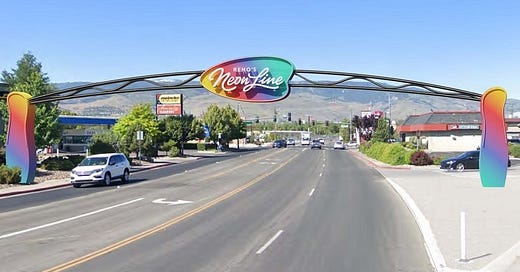


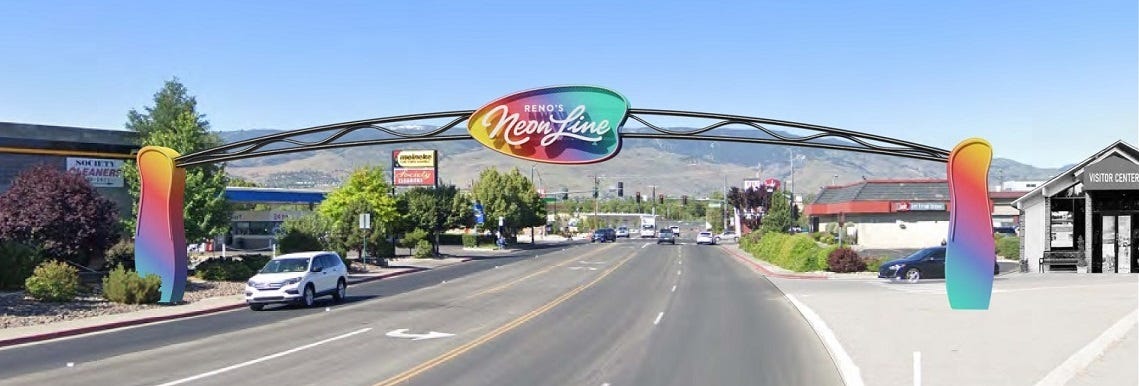
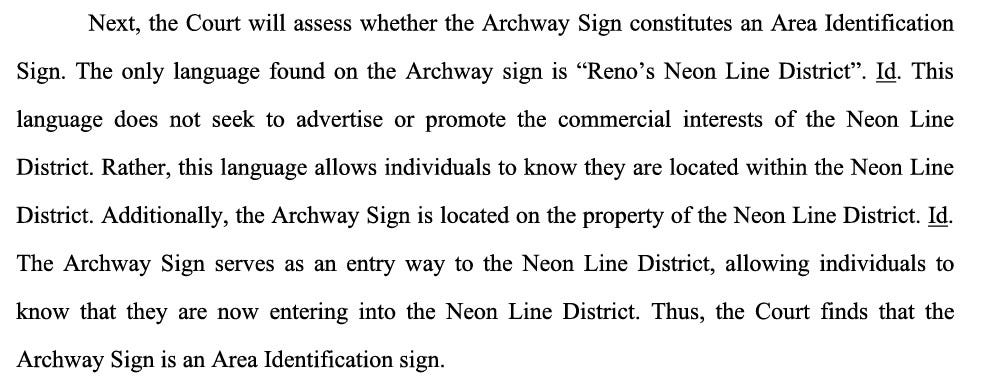

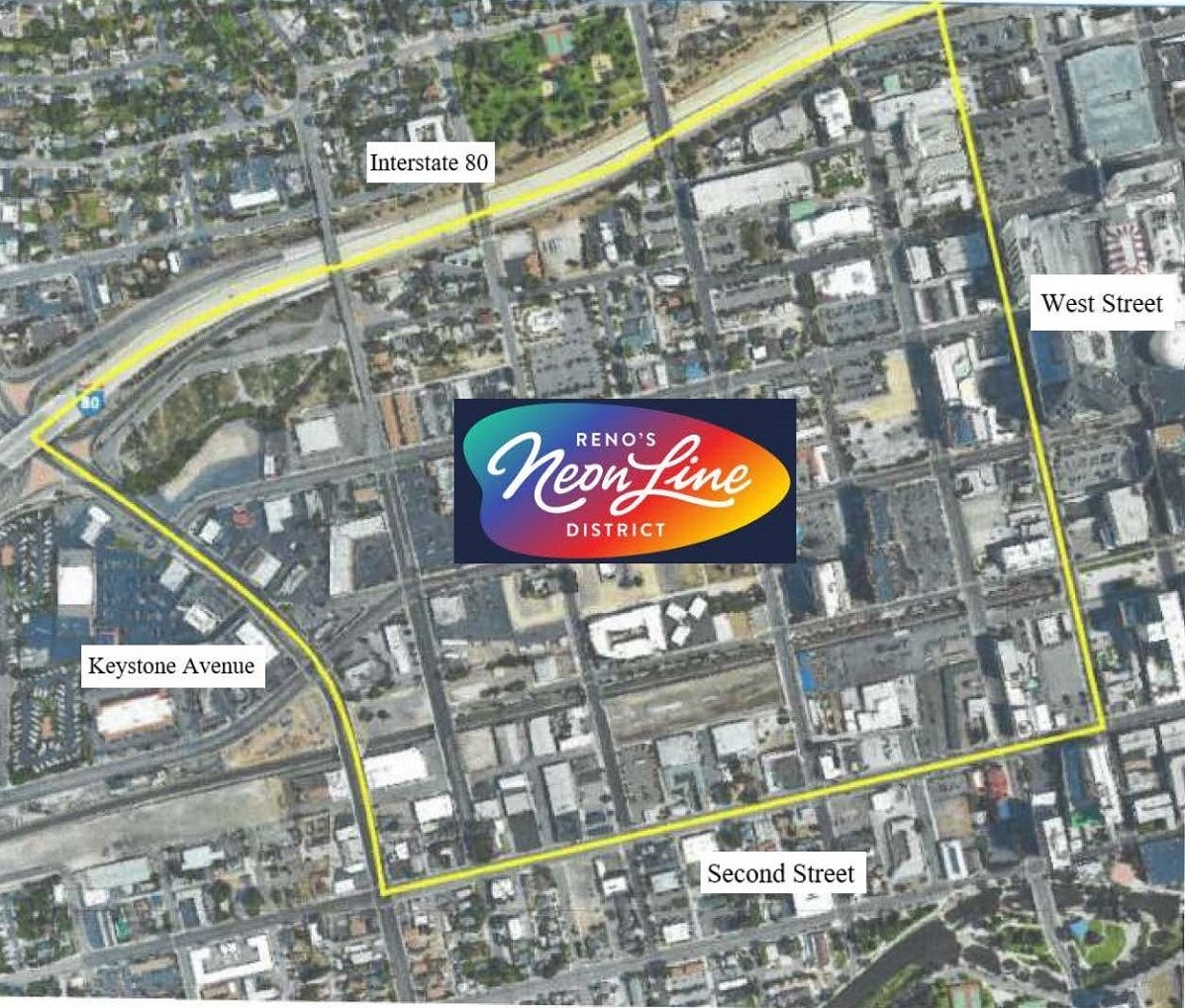
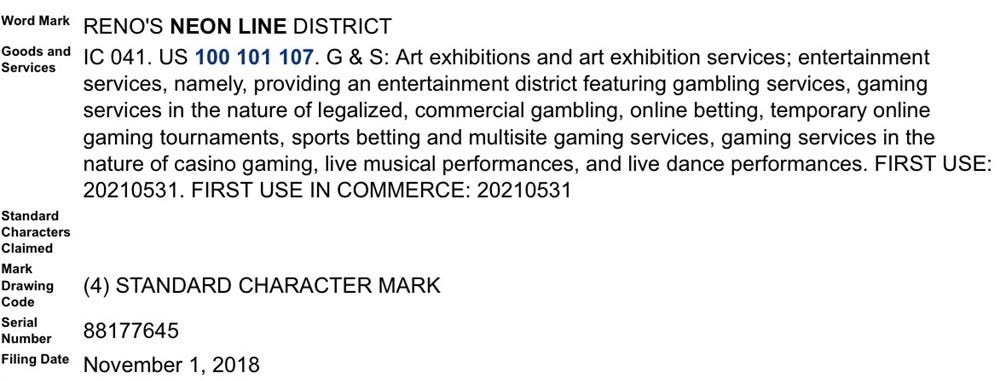
I really appreciate that you're digging in to this - a trademarked name, no small find! Thanks and please know that I appreciate you staying after this for those of us who live here.
Thank you for all you do to get the informayion and facts out to us!